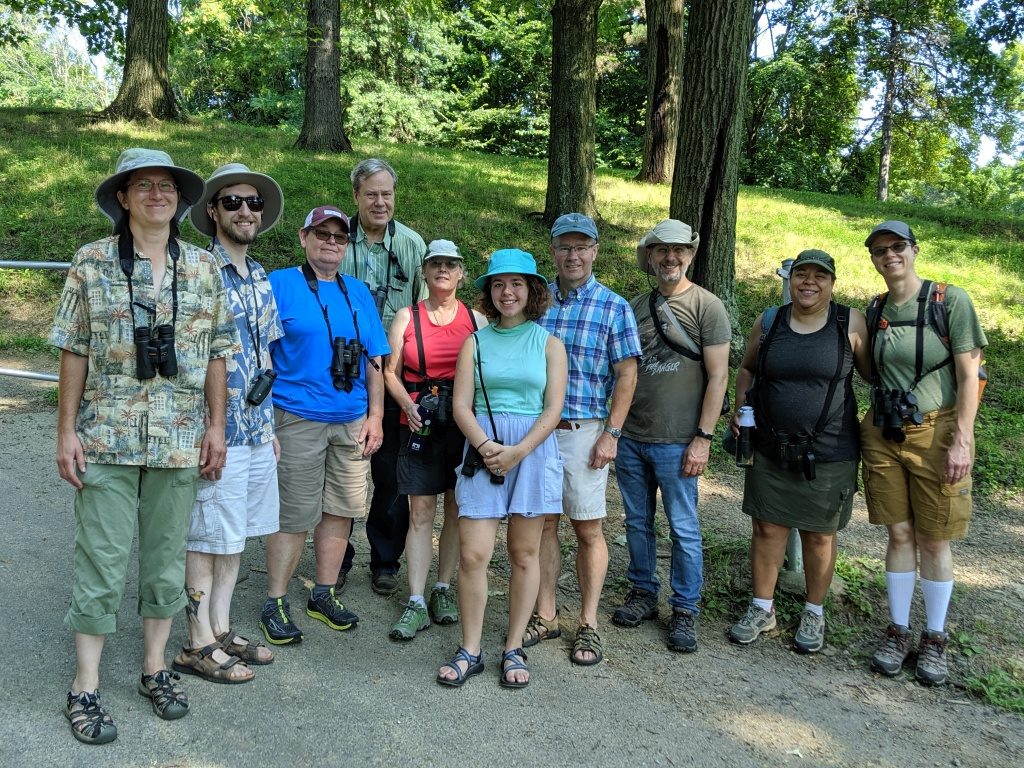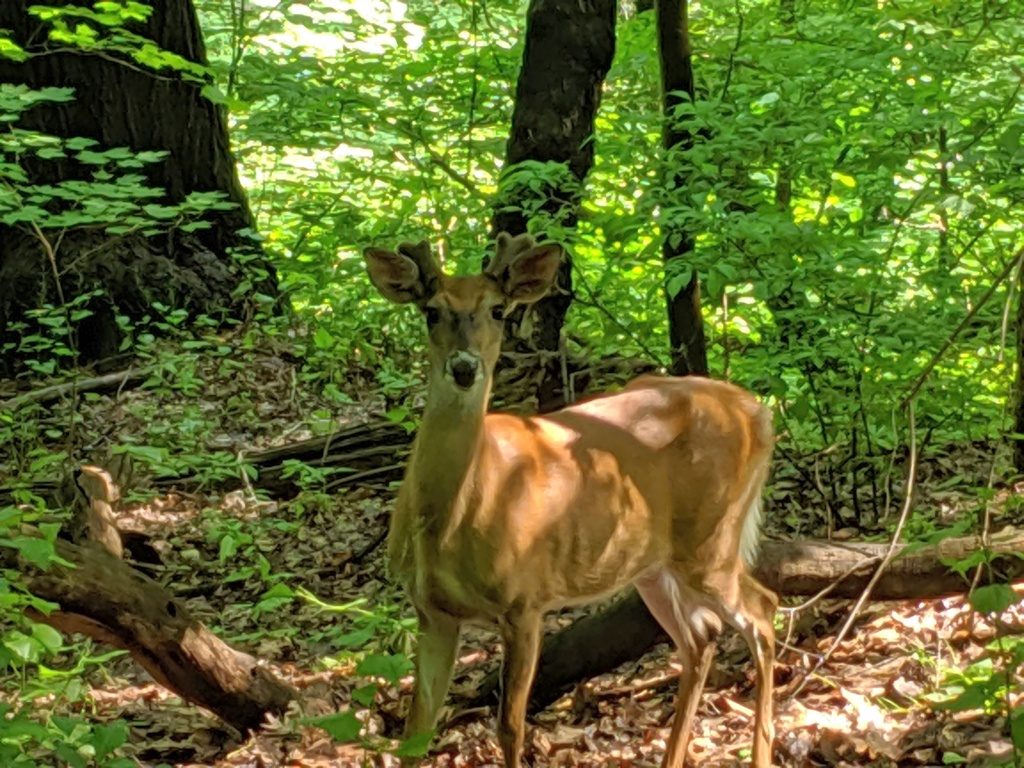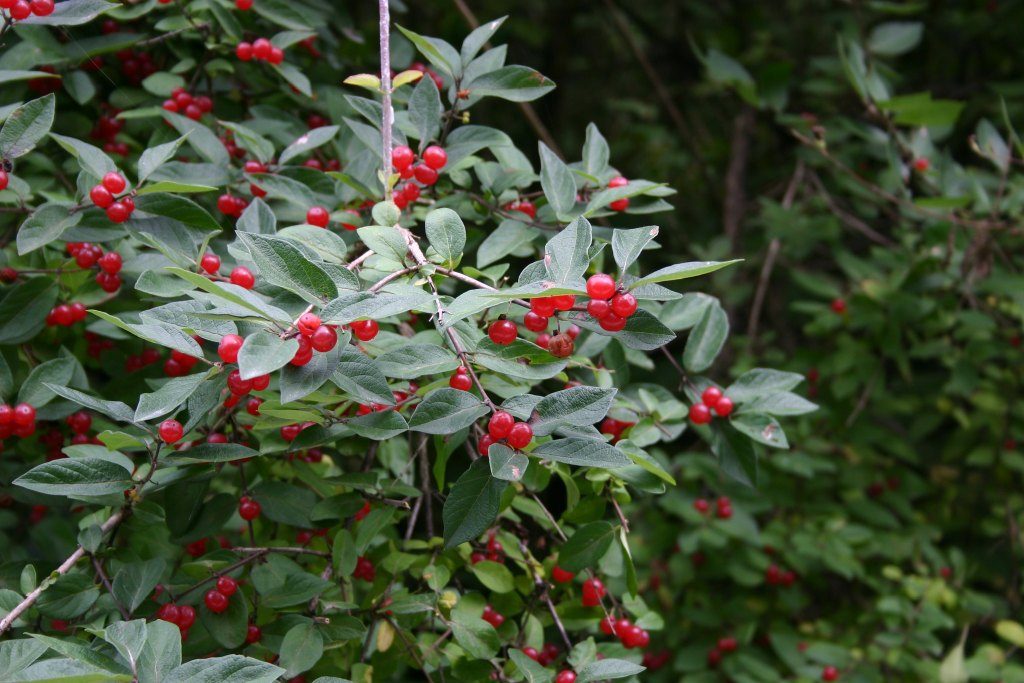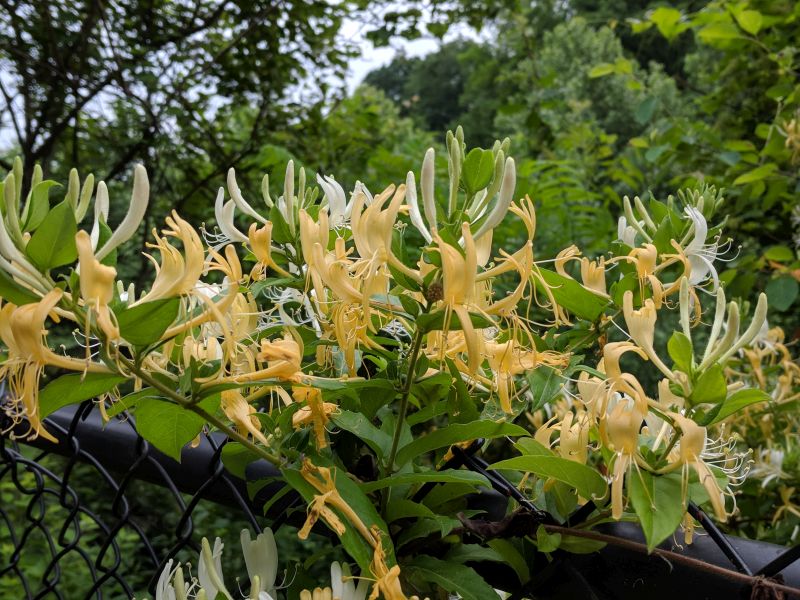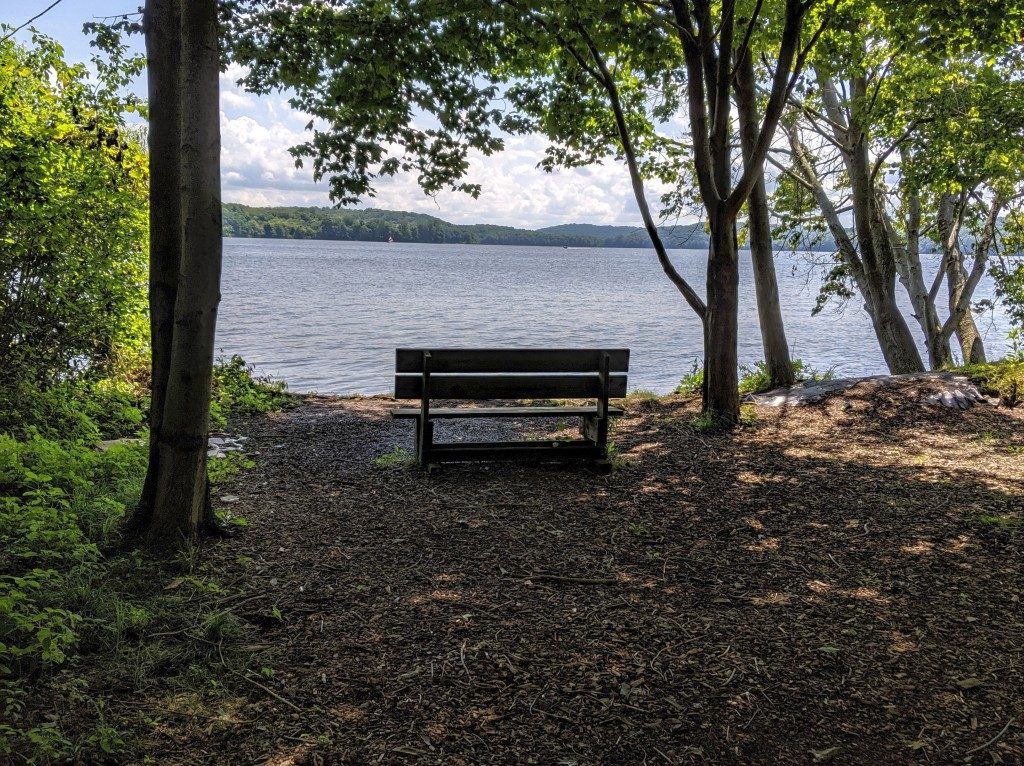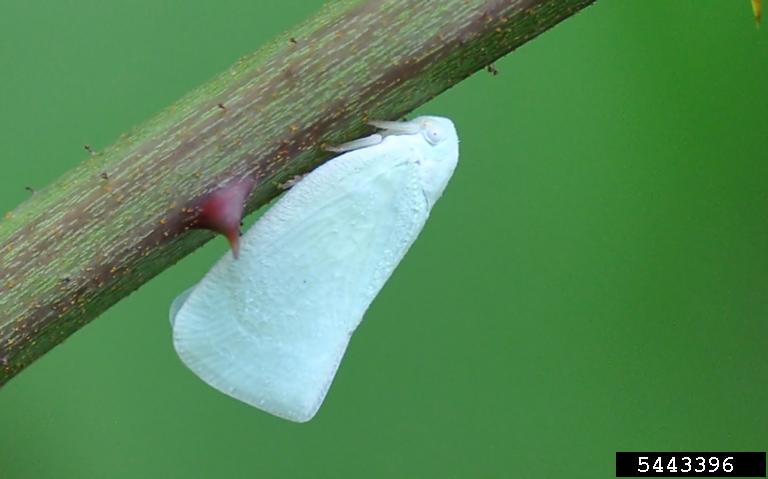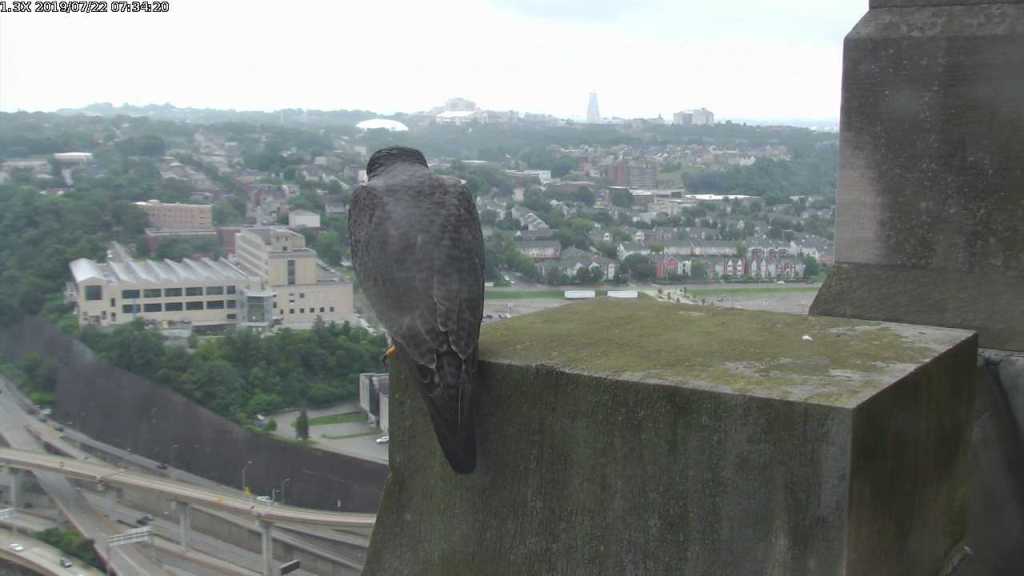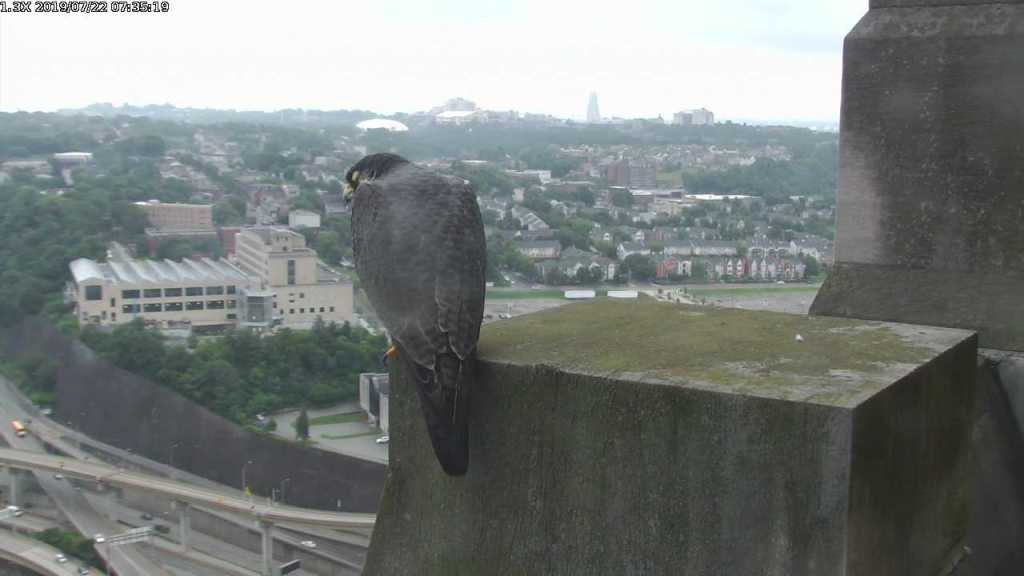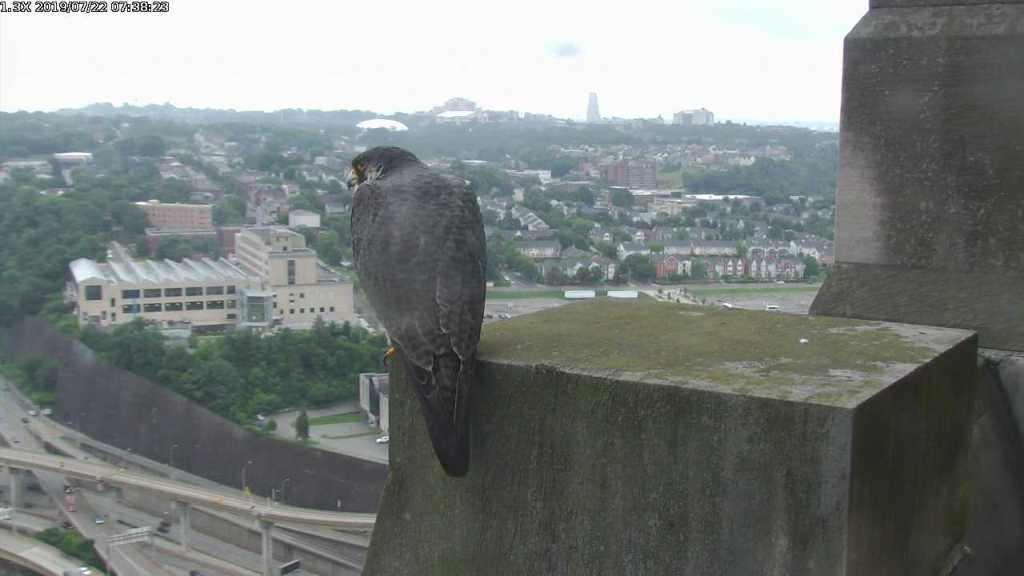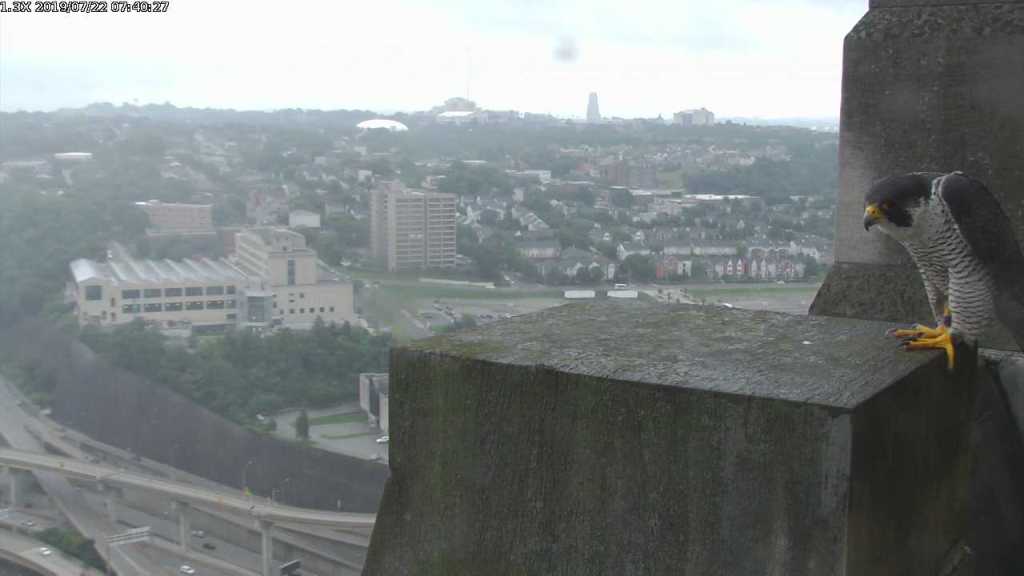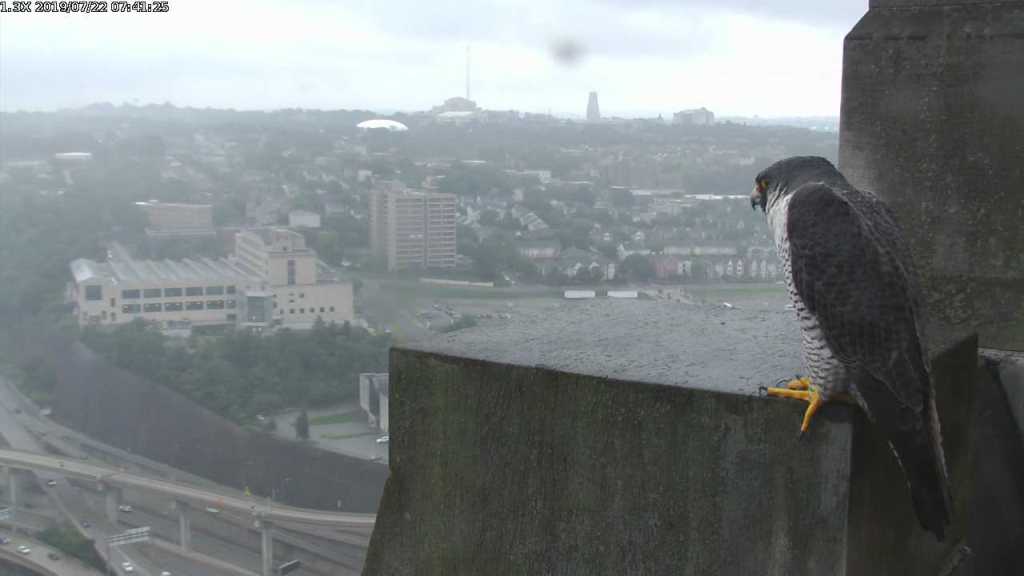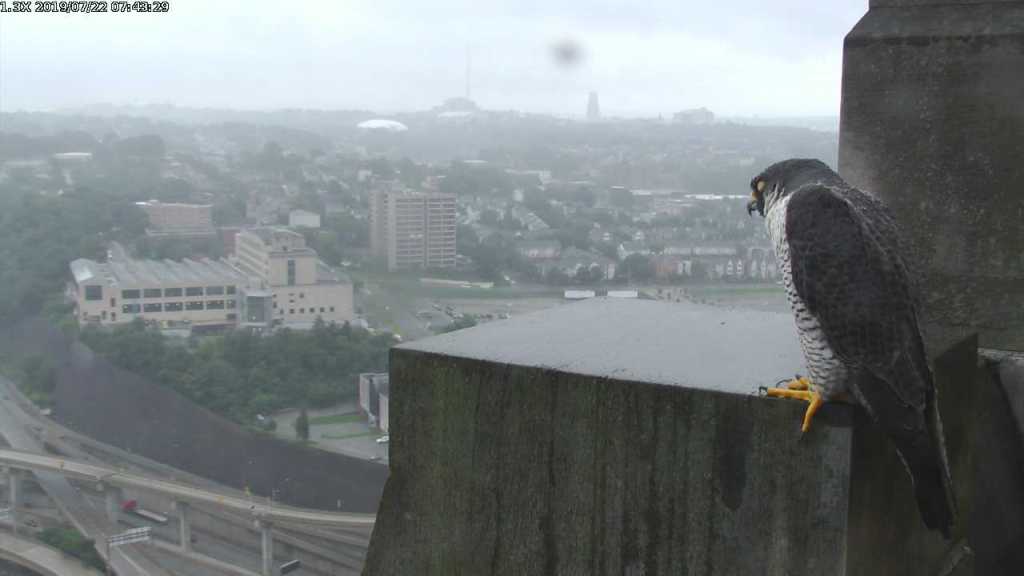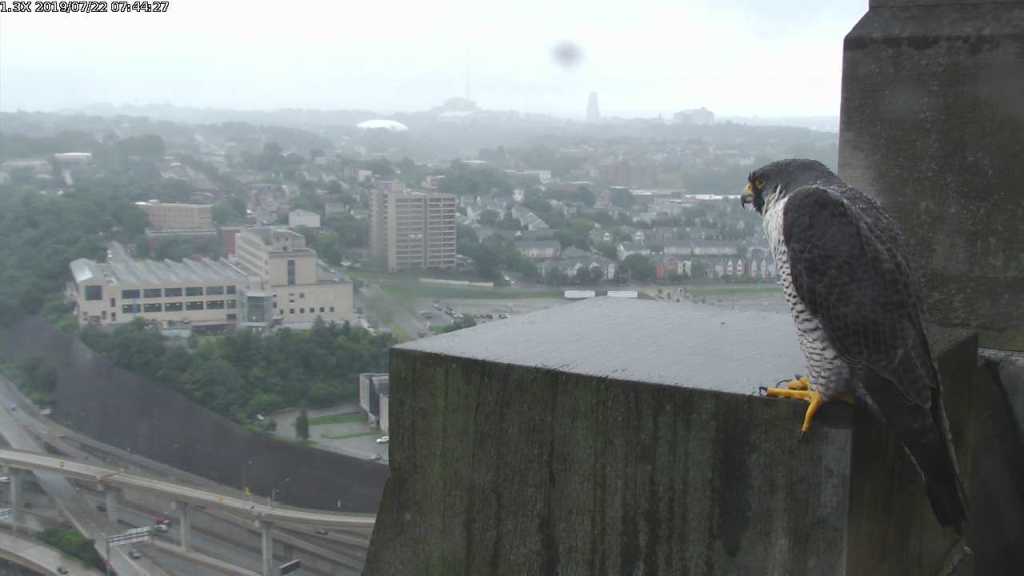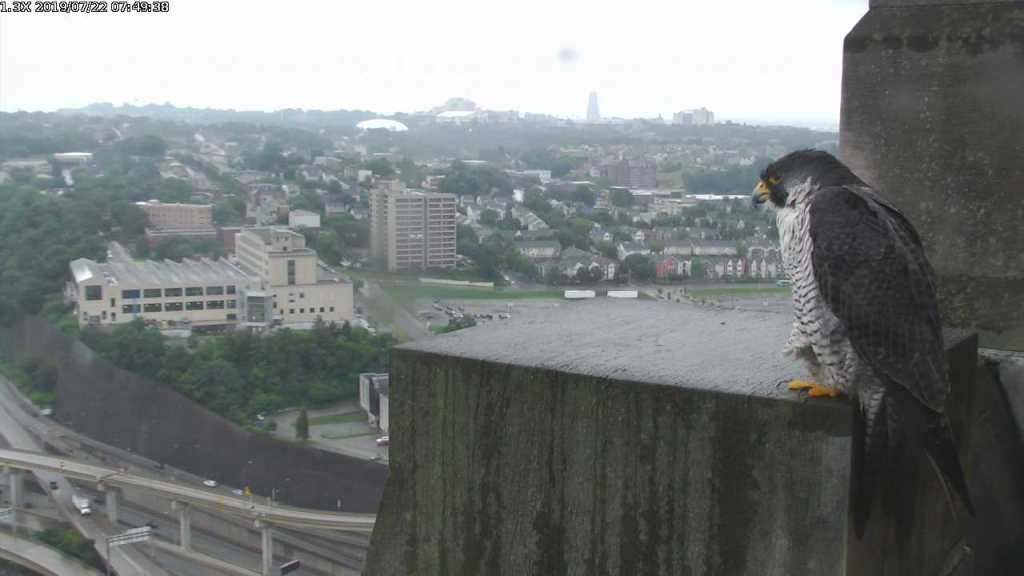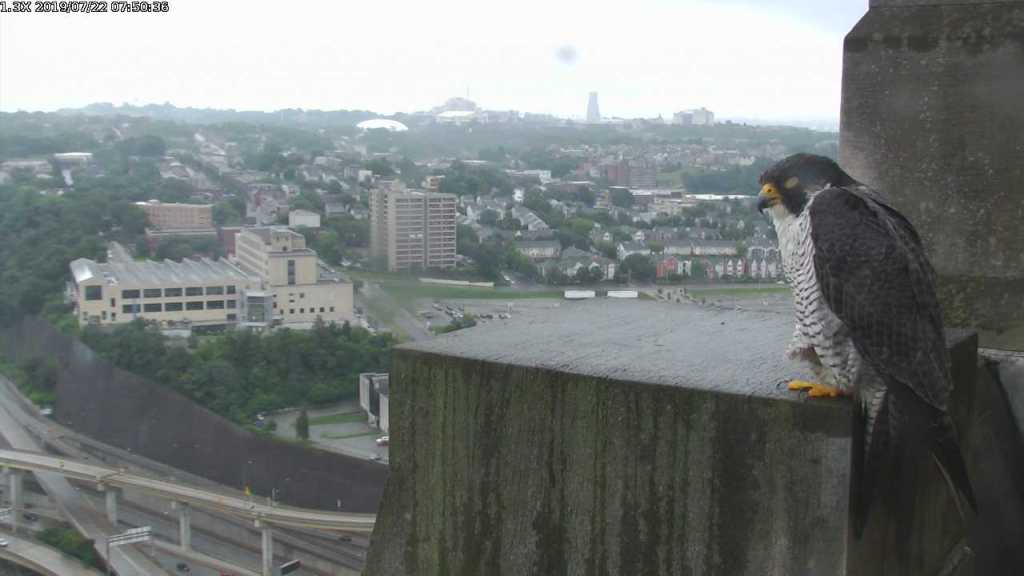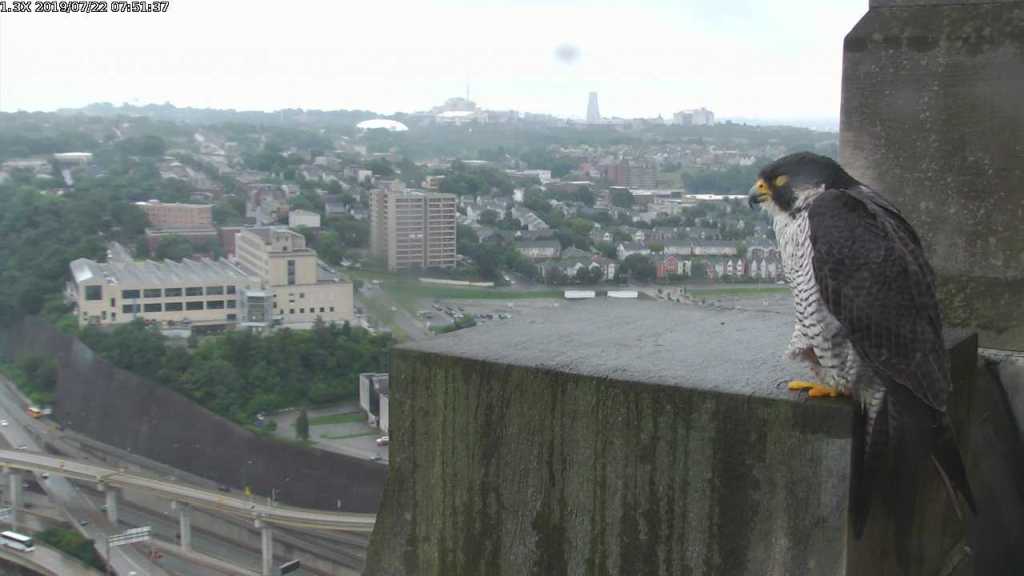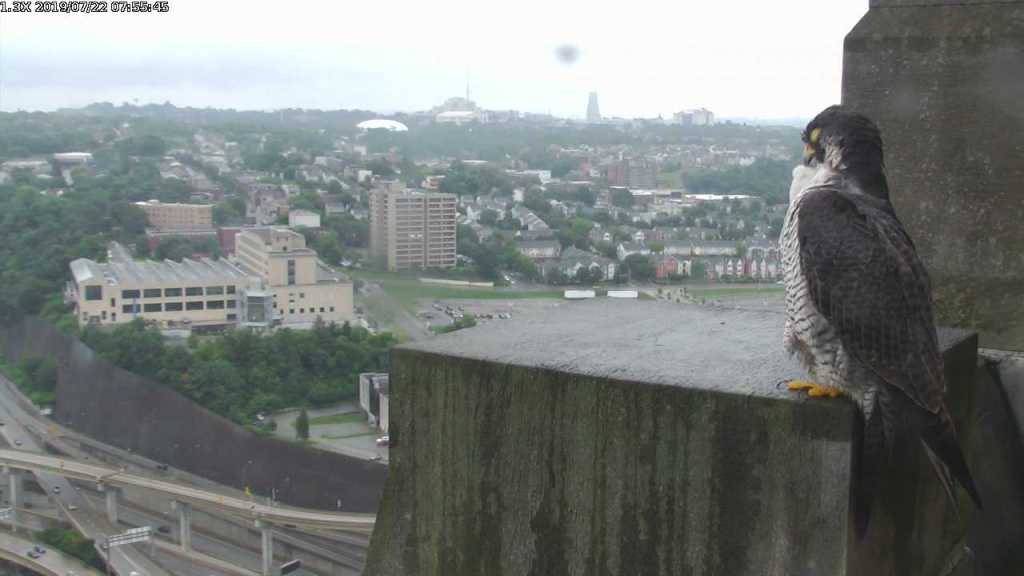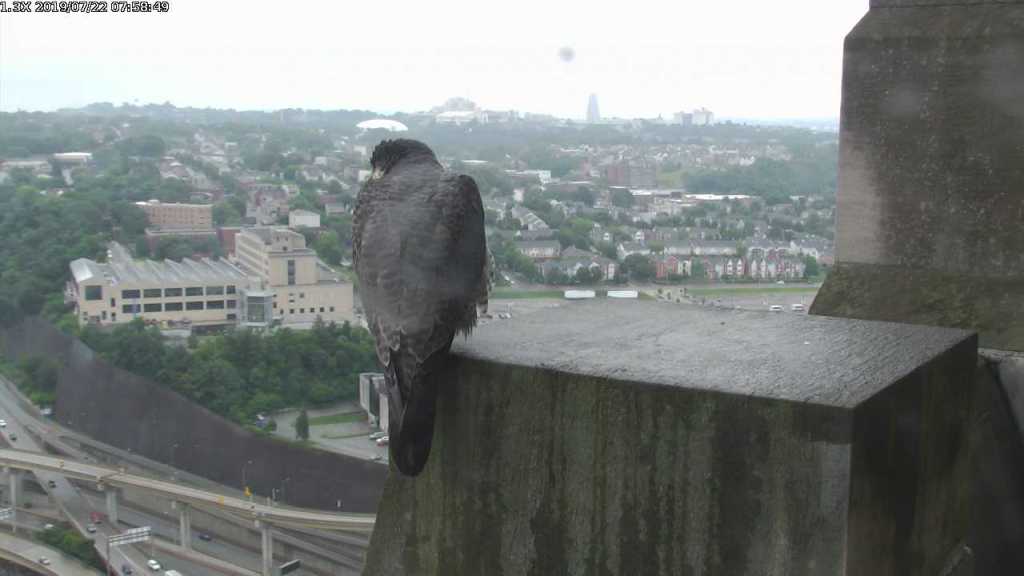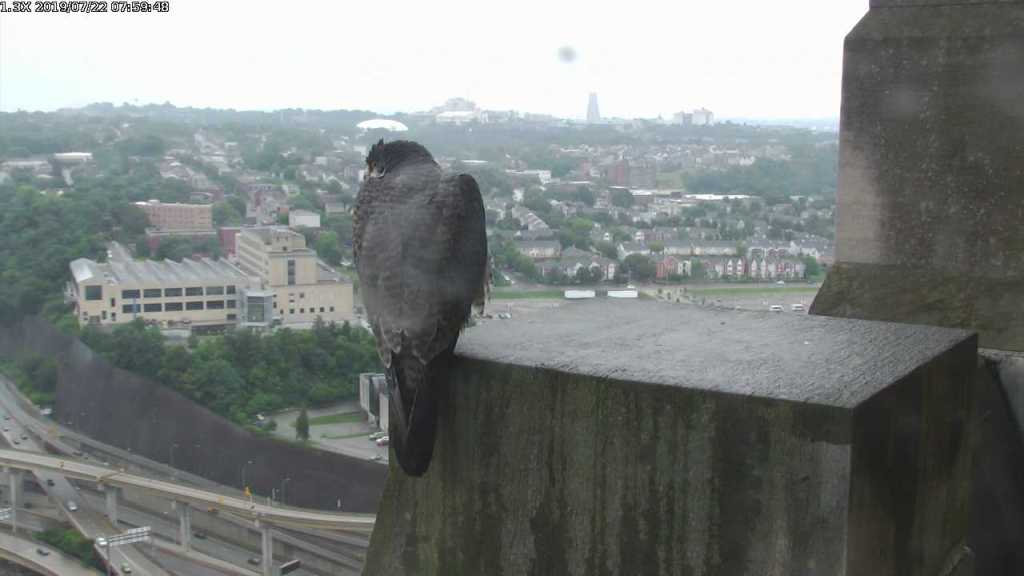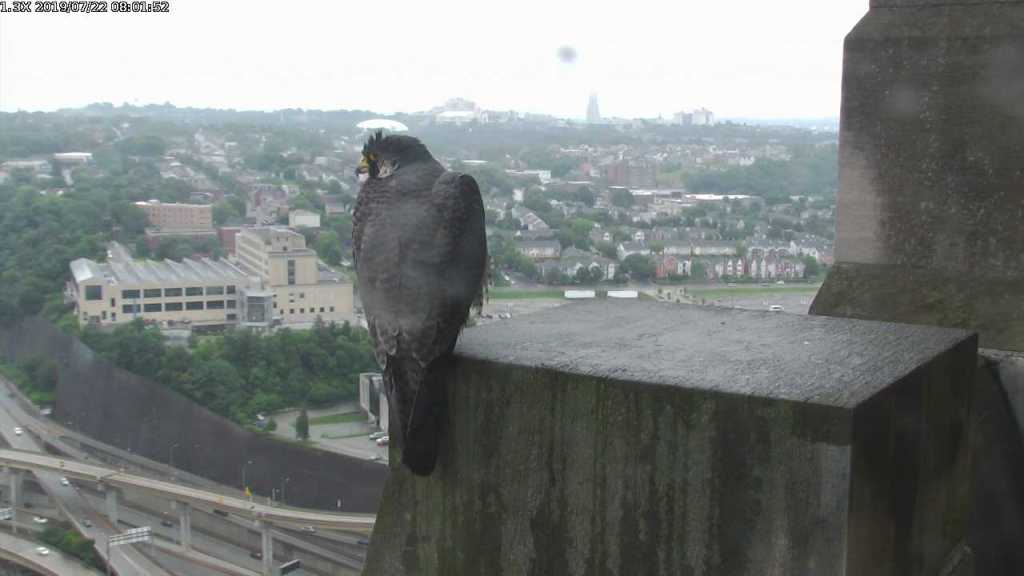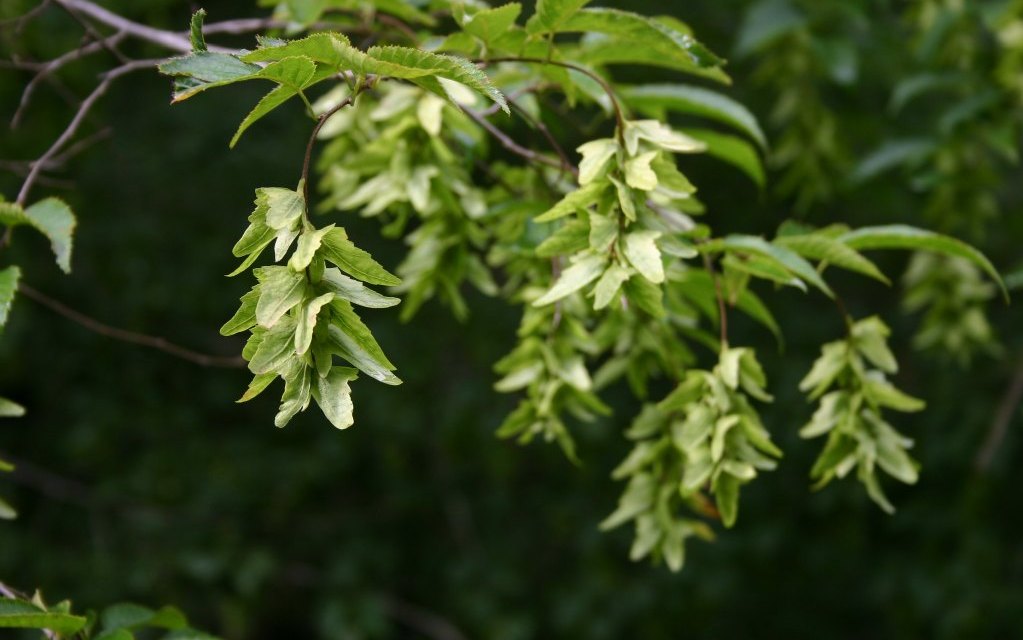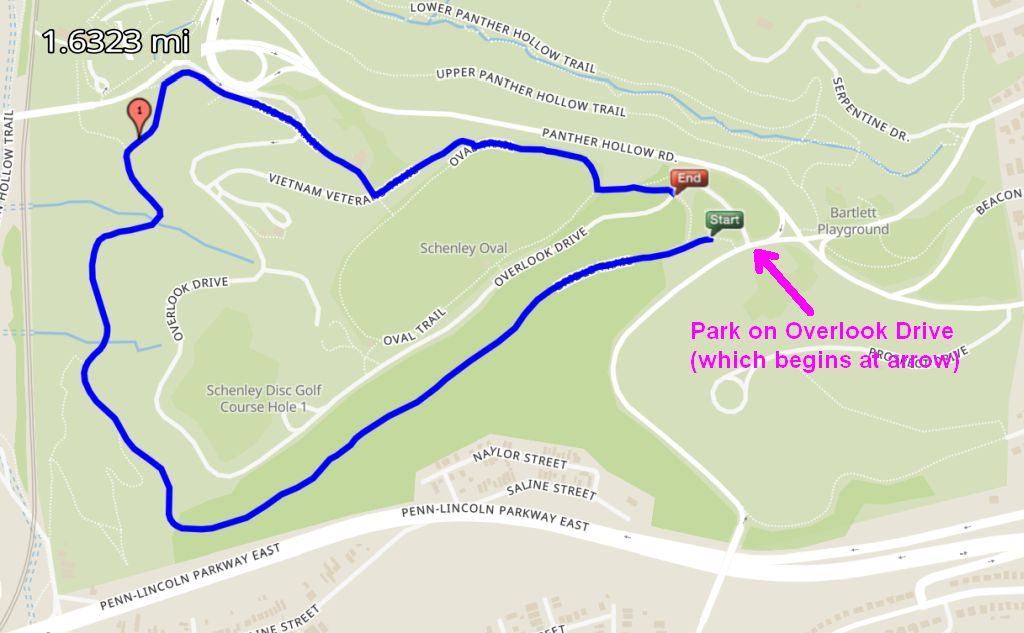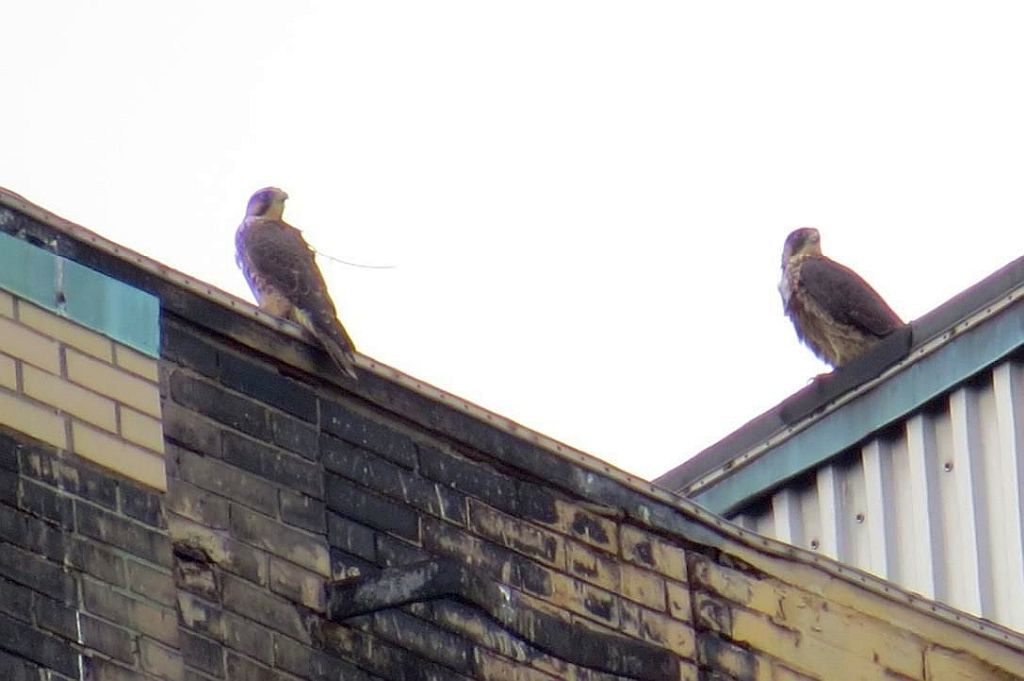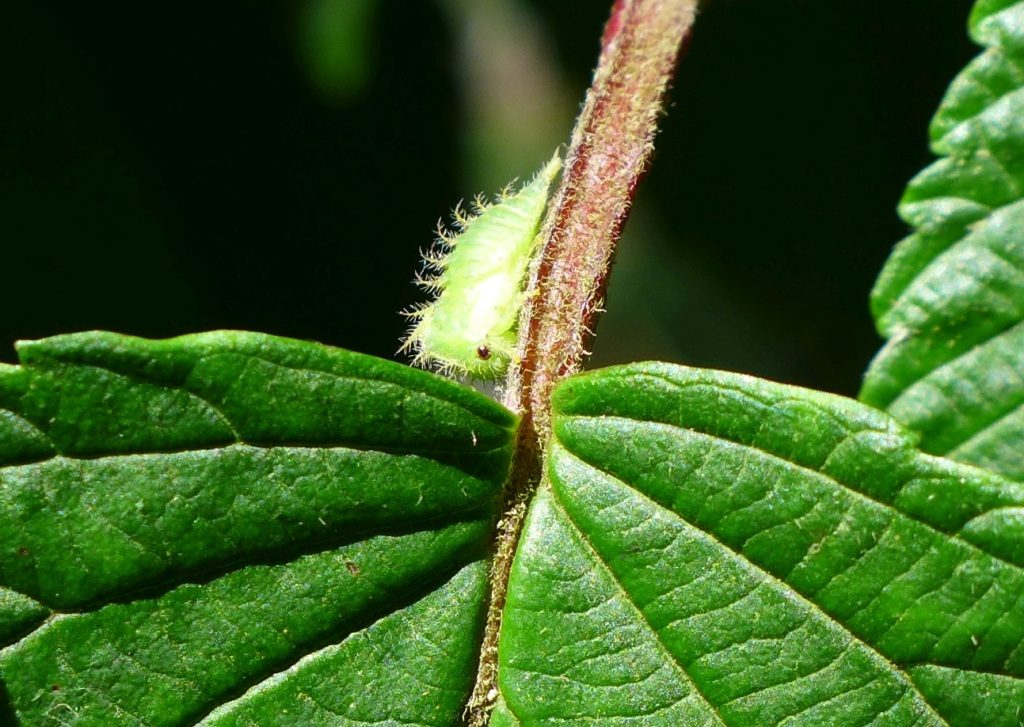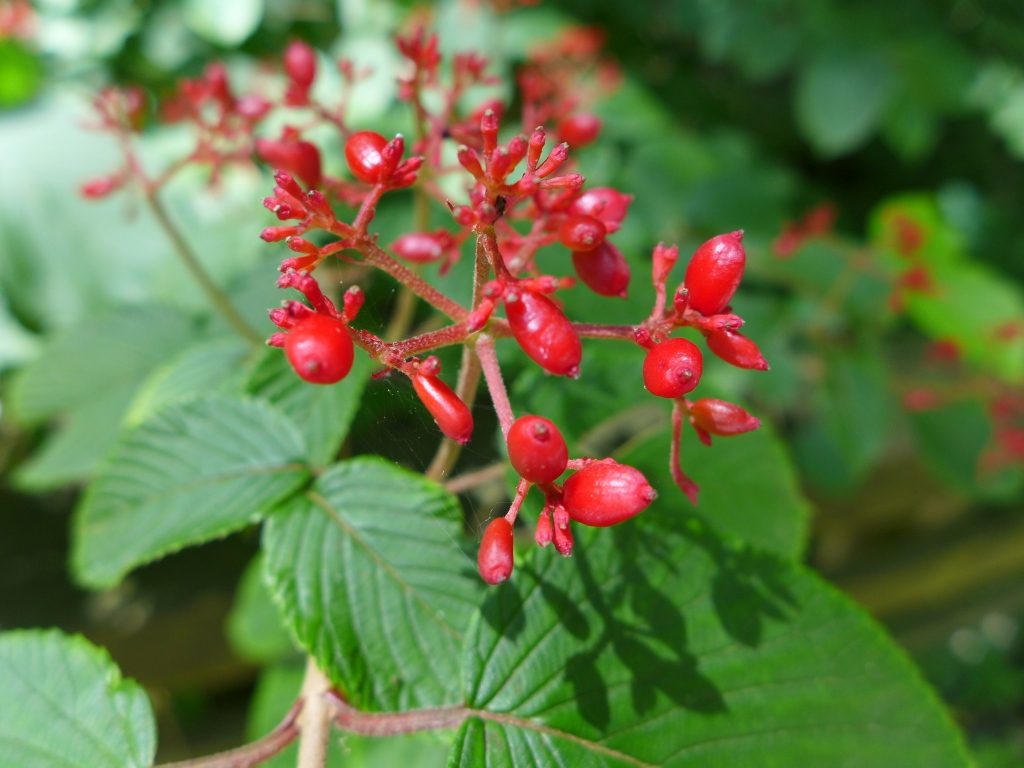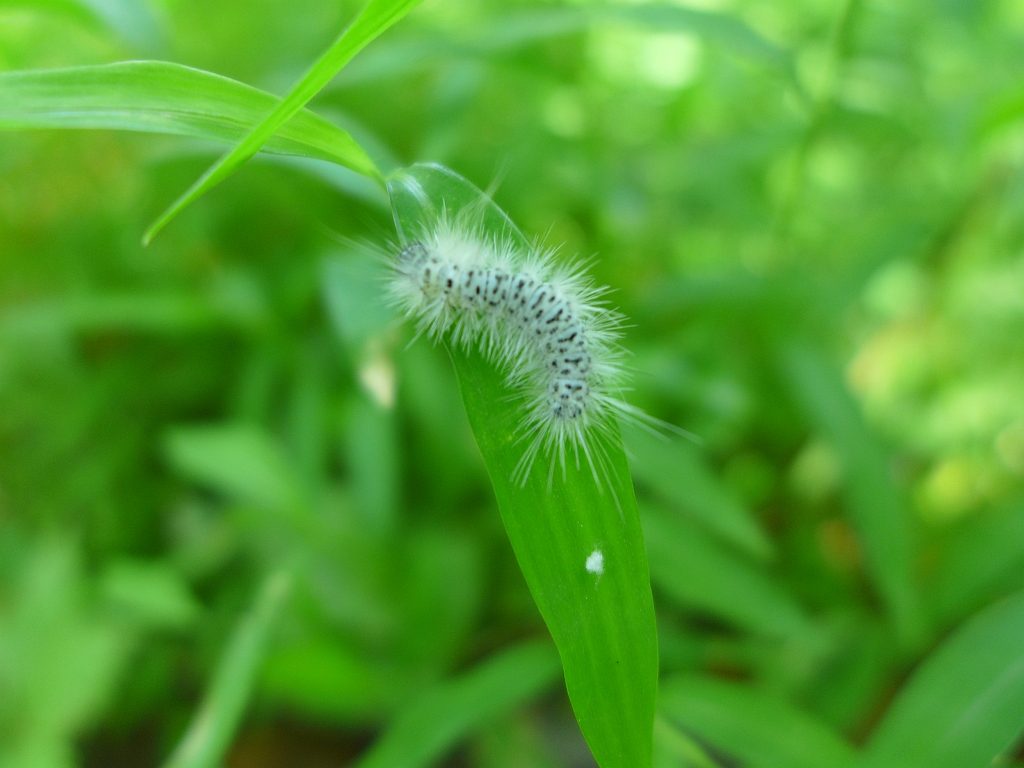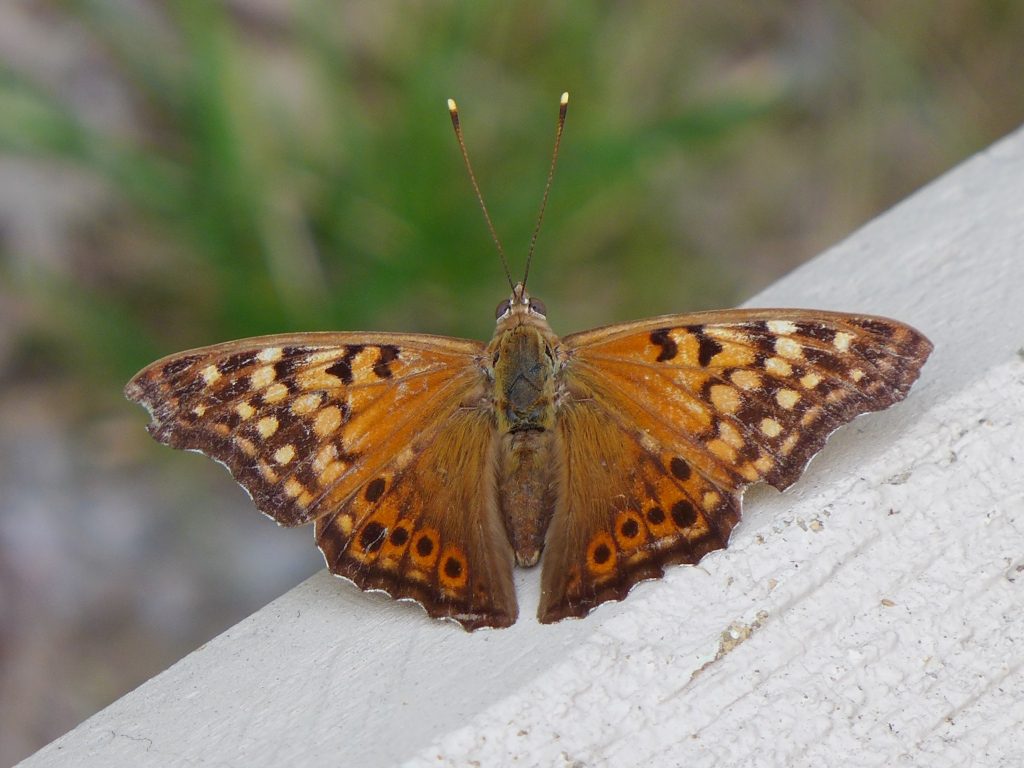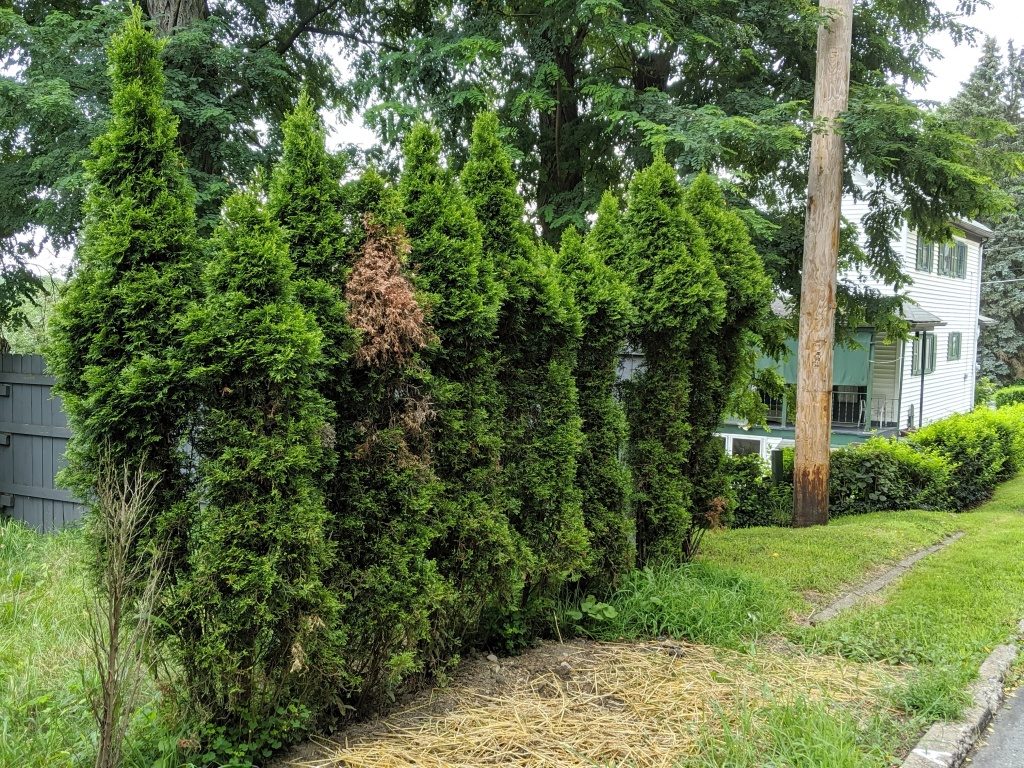
29 July 2019
Yesterday in Schenley Park, as we saw several white-tailed deer quite close to us, I remarked that the number of deer in Schenley is too high for the park’s habitat. How can you tell if there are too many deer in your neighborhood? Take a look at the arborvitae.
Many species of arborvitae (Thuja spp.) are planted as privacy hedges including our native Thuja occidentalis or northern whitecedar.
In the wild and in our yards Thuja trees are a favorite food of white-tailed deer. They browse it from the ground up to the height of their outstretched necks.
When the number of deer is in balance with the landscape, arborvitae have a normal tapered shape. You’d never notice that the deer are eating them.
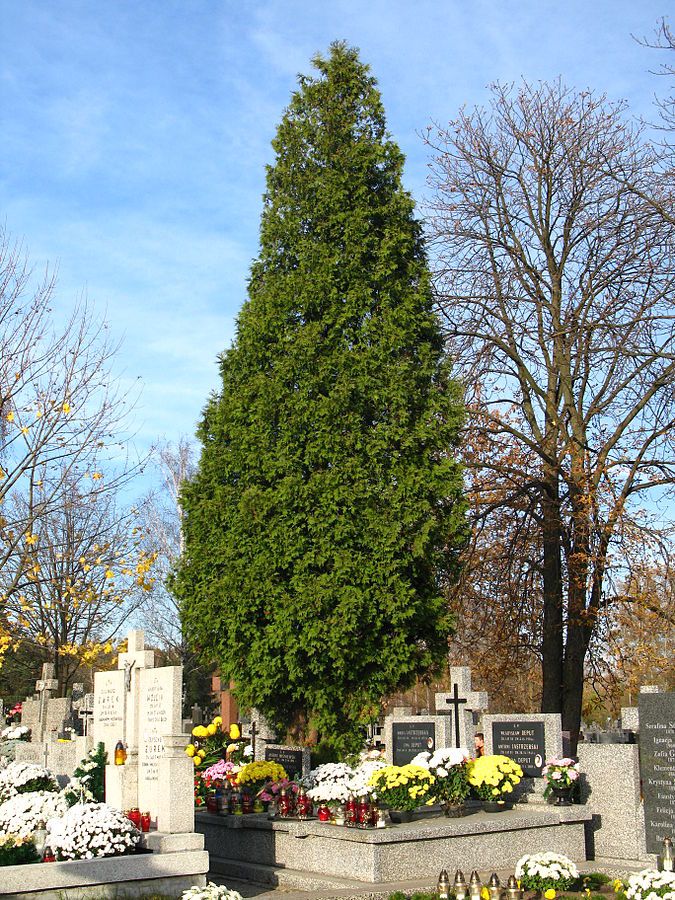
When there are more deer than the landscape can handle, their browsing is intense. The trees are cropped close to the trunk — even down to the bark — because the plants can’t replace their branches fast enough.
If your arborvitae trees look like the row shown at top, there are too many deer in your neighborhood, the landscape is out of balance. “Too many” can happen fast. Deer can double their population in just two to three years.
I photographed that row of damaged trees just six blocks from my house. Yes, my city neighborhood has too many deer now. We could protect our trees with netting as described in this video. Or we could give up and never plant arborvitae again.
p.s. There are too many deer everywhere in the eastern U.S., even in the forest. Read more here.
(photo by Kate St. John)
